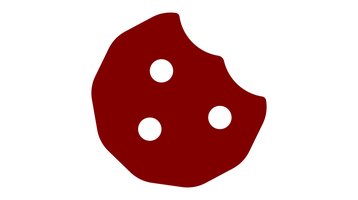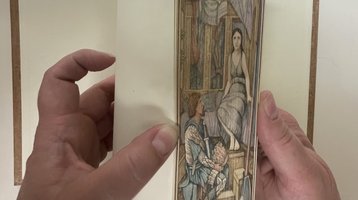Meet Brendan Whyte, Map Curator and Head of the Map Collection

Brendan Whyte joins us today as the Map Curator and Head of the Map Collection. Brendan will develop, promote, and preserve the Map Collection and provide programs and services to support the use of cartographic materials, including digital map collections, in research and teaching across campus.
Brendan holds a PhD in Geography from the University of Melbourne, and a Master of Philosophy in Development Studies / Public Health from Massey University in New Zealand. His most recent position was Acting Curator of Maps at the National Library of Australia. In addition, Brendan conducts his own research and is a contributor to the University of Chicago Press’ The History of Cartography project (see “Boundary Surveying in East and Southeast Asia” in vol. 6).
What led you to become a map librarian?
As a child I ensured the books on my parents' bookcase were kept in alphabetical order by author, and on family holidays I always sat in the back with the map working out distance and times to the next junction or town. I then progressed to drawing my own maps à la “Treasure Island”, and collecting any map I could beg, steal or borrow and sorting them by country. Things just sort of snowballed from there…
How will you support students, faculty, and instructors in your role here?
The old chestnut that “history is about chaps and geography is about maps” suggests that maps are only for geographers. But with the increasing democratisation of spatial information via GIS and Google earth, anyone can now access detailed spatial information at home and draw their own maps. This means many disciplines outside geography and planning have begun integrating geospatial aspects into their work. I want to build on that trend, and encourage the use of maps, and geospatial thinking and analysis, in disciplines outside the traditional users of maps, from drama students to language and literature professors. My own research, for example, has included mapping the "Rural Rides" of 19th-century English journalist William Cobbett, and identifying and analysing the use of the maps used as pivotal props in the 1970s British TV spy drama “The Sandbaggers”.
What’s your favorite thing about being a Map Librarian?
The way people’s eyes light up when they come into a map room and see maps on the wall or on tables, and walk over to study them. Whether they used maps in scouts, orienteering, to plan a holiday, or have a pretty one hanging on their wall, maps just fascinate people as a window into another time and place. So many patrons tell me how much they love maps. I don’t think medical or law librarians ever get such enthusiastic feedback!
What are you interested in outside of libraries?
I have published a play-by-mail board-gaming zine ever since my high-school days, moderating various map-based games from Diplomacy to Railway Rivals; and in turn I play in pbm zines run by others in the US, Canada, UK and Australia. I also design and play wargames, and have had several commercially published. Outdoor activities include what Kiwis call tramping, Aussies bushwalking, and I believe Americans call hiking. I also enjoy cycling and walking holidays, along railtrails or back-country roads: we geographers can’t stop exploring.
What have you been reading, listening to, or watching lately?
I'm slowly working my way through the novels of English-Australian aeroengineer-novelist Nevil Shute, whose manuscripts are held in the National Library of Australia. On the plane here I finished reading "The Rainbow and the Rose", about a daring medical air mission in remote western Tasmania. And I've just begun William Faulkner's "Wild Palms" (set partly in Chicago), as a result of recently seeing the 2023 Wim Wenders film "Perfect Days", in which Hirayama, the Tokyo public toilet cleaner protagonist, reads some of the book each night before bed.
You just moved to Chicago from Australia, what is something you had to do, see, or eat before leaving?
Sell the car and rent the house! But more seriously: There's an old railway line that forms part of the boundary of the Australian Capital Territory with New South Wales, for the anticipated conversion of which into a railtrail I could no longer wait. So although it's still currently overgrown, a mate and I set out to walk as much of the line as we could before I flew out. We managed 70 miles over seven day-walks, from Queanbeyan Junction to Cooma, about half the length of the entire line. We climbed across all the decaying timber trestle bridges, and saw kangaroos, wombats, cockatoos, deadly eastern brown snakes, and even foxes en route. The last leg into Cooma was completed in 94 degrees of burning Australian Summer sun. Whew!
Brendan can be reached at bwhyte@uchicago.edu or phone (773) 702-9181.


